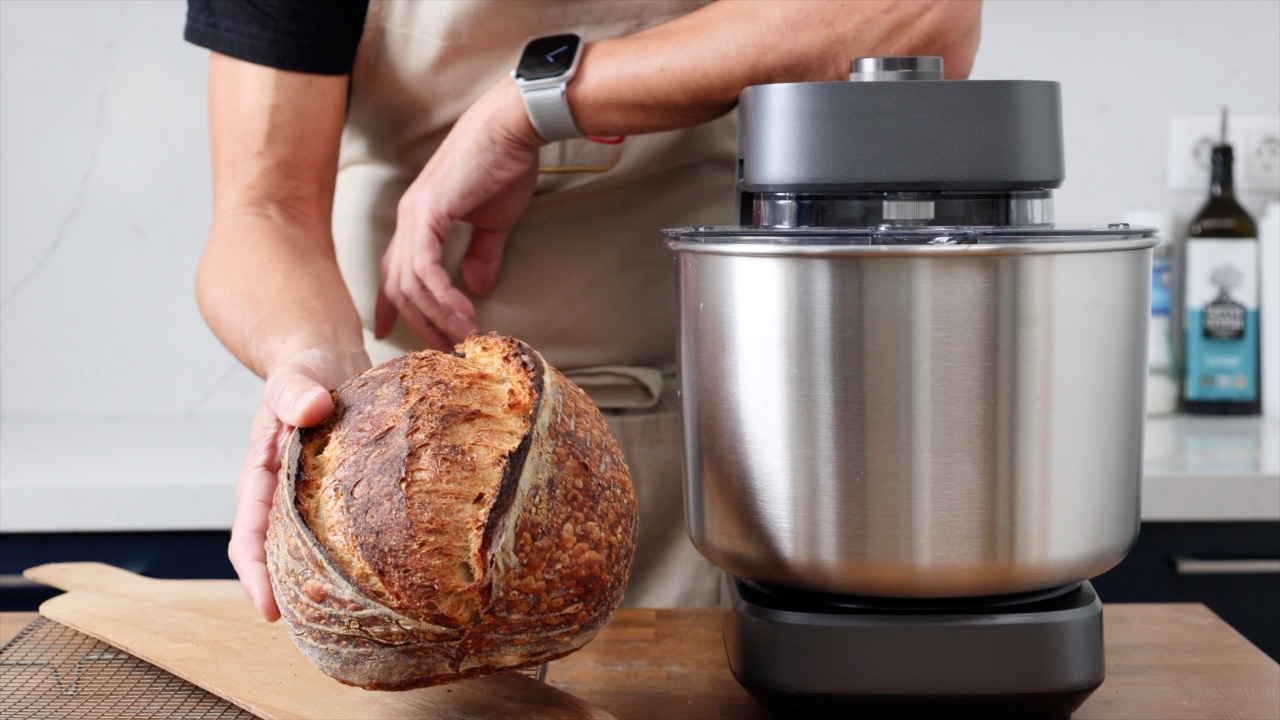Covered or Uncovered, that is the question!

Why cold-proof anyway?
Cold proofing sourdough involves placing it in the refrigerator for an extended period, normally over 5 hours and up to 48 hours.
Over several hours the dough slowly decreases in temperature and extends the final part of the fermentation process. I find that this improves the flavour of my sourdough loaf, but there are a couple of additional bonuses.
Because the dough drops in temperature, it can be held in the fridge for some time without too much danger of the dough over fermenting, this makes scheduling the baking process easy. If I plan to bake at 8:00 but get delayed, the dough will sit quite happily in the fridge until I’m ready to bake.
During the cold-proof, the dough drys out sightly on the outside creating a thin skin making it easy to handle and a doddle to score.
But the big question is… Should we leave the dough covered or uncovered in the fridge?
I employ both methods with success but the decision to cover or not depends on which fridge I use to cold-proof my dough.
My backup fridge is simple. The temperature is controlled by a cooling panel located on the inside (back) of the fridge.
As the panel goes through its cooling cycle moisture freezes and thaws which stops the fridge from becoming too dry. There are no fans operating in the fridge so the air is still.
Thanks to these two elements I can leave my dough uncovered in this fridge with no danger of it drying out. I have the best results when I place my basket on the middle shelf with another shelf located about 5 cm from the top of the basket.
My kitchen fridge is another story. It has an airflow system which circulates the cold air. This is great for keeping an even temperature throughout the fridge but not so great if you leave your dough uncovered while cold-proofing.
The circulation of the air in the fridge excessively dries out my dough. It loses a lot of moisture which negatively affects the oven spring and leaves the final loaf looking constrained on the outside and dry and tight on the inside.
So, when I proof in my kitchen fridge that has the airflow system I cover my dough with a plastic bag.
I place the basket inside, fold the bag over and place the opening of the bag under the basket. This creates a micro-climate for my dough and stops it from drying out. I try to keep my plastic usage to a minimum and have been using the same bags to cover my dough for over a year now.
Even though the dough is contained in a humid environment inside the bag, the rattan basket or cloth insert is able to wick some of the moisture away from the surface of the dough. This creates the thin dry skin on the exterior of the dough which makes it easy to handle and score.
Using a bag will not cause your dough to stick to the basket. If you are experiencing problems with the dough sticking then you should check for other causes. Make sure your dough isn’t overly hydrated and hasn’t over-fermented.
Using rice flour to dust your dough and the basket is a great way to ensure your dough doesn’t stick. I used white bread flour for dusting for years but have had better success with rice flour. The dough pops straight out of the basket without any danger of sticking.
Conclusion
Covering your dough with a plastic bag will stop it from drying out and delivers great results no matter how your fridge functions. But if for any reason you want to proof your dough uncovered, make sure your fridge doesn’t get too dry and there aren’t any fans circulating air which could cause the dough to dry out.
Each and every fridge will have a different micro-climate that is influenced but the operation of the unit, the ingredients stored inside and the way they are covered.
As with any aspect of sourdough, it’s worth experimenting and seeing what process works best for you.
In the video below I dive a little deeper and show you the differences in my fridges when cold proofing.
If you enjoyed this blog and would like to support ongoing content creation and help keep the website ad-free, you can click below to make a contribution.
As an Amazon Associate, I earn from qualifying purchases.
As an Amazon affiliate I earn from qualifying purchases


